Sony A95K review: a new era for OLED
Sony's QD-OLED, reviewed here in the XR-55A95K, is a new era for OLED TV technology that's simply stunning. Here's why


There's so much good to be gleaned from the Sony A95K. Although its brightness premium over regular OLED isn't quite a quantum leap, given how beloved the best regular OLED TVs are among AV fans that brightness bump is still a major bonus. Couple this with Sony’s take on QD-OLED technology offering a more controlled and ‘creator’s intent’ approach than Samsung's S95B, then add in Sony’s much superior audio system, and the A95K is pretty much by default the best all-round 4K TV we’ve ever seen.
-
+
Beautifully dynamic and vibrant pictures
-
+
Excellent sound quality
-
+
Distinctive and adjustable design
-
+
Supports most of the latest gaming features
-
+
Content-rich smart system
-
-
Can lose black level in bright light
-
-
No high frame rate Dolby Vision gaming
-
-
Only two HDMIs support 4K/120Hz
-
-
Google TV interface can be confusing
Why you can trust T3

Despite the new Quantum Dot twist on OLED technology being developed by Samsung, it was actually Sony that first announced a range of Quantum Dot OLED TVs back at the CES in Las Vegas in January 2022. Sony placed its A95K QD-OLED, as reviewed here, at the top of its 2022 TV range too, while Samsung ummed and aahed before placing its SB95 QD-OLED TVs only in the middle of its premium TV range, below its high-end Mini LED models.
Sony has retained the flagship status of its QD-OLED models throughout the year – and you can read about that technology and how it works here – while Samsung slashed the prices of its QD OLED TVs so fast and so heavily after launch that it almost gave the impression that the brand couldn’t get rid of them fast enough. The Sony, by comparison, remains much pricier
Finally, as we’re about to show in this review, while Samsung perhaps used its QD-OLED debutantes as a stick to aggressively beat regular OLED TVs with, Sony has used its A95Ks to offer a new level of refinement and picture quality aimed squarely at the discerning home cinephile. So is the A95K the best QD-OLED TV to buy right now?
Sony A95K: Price & Availability
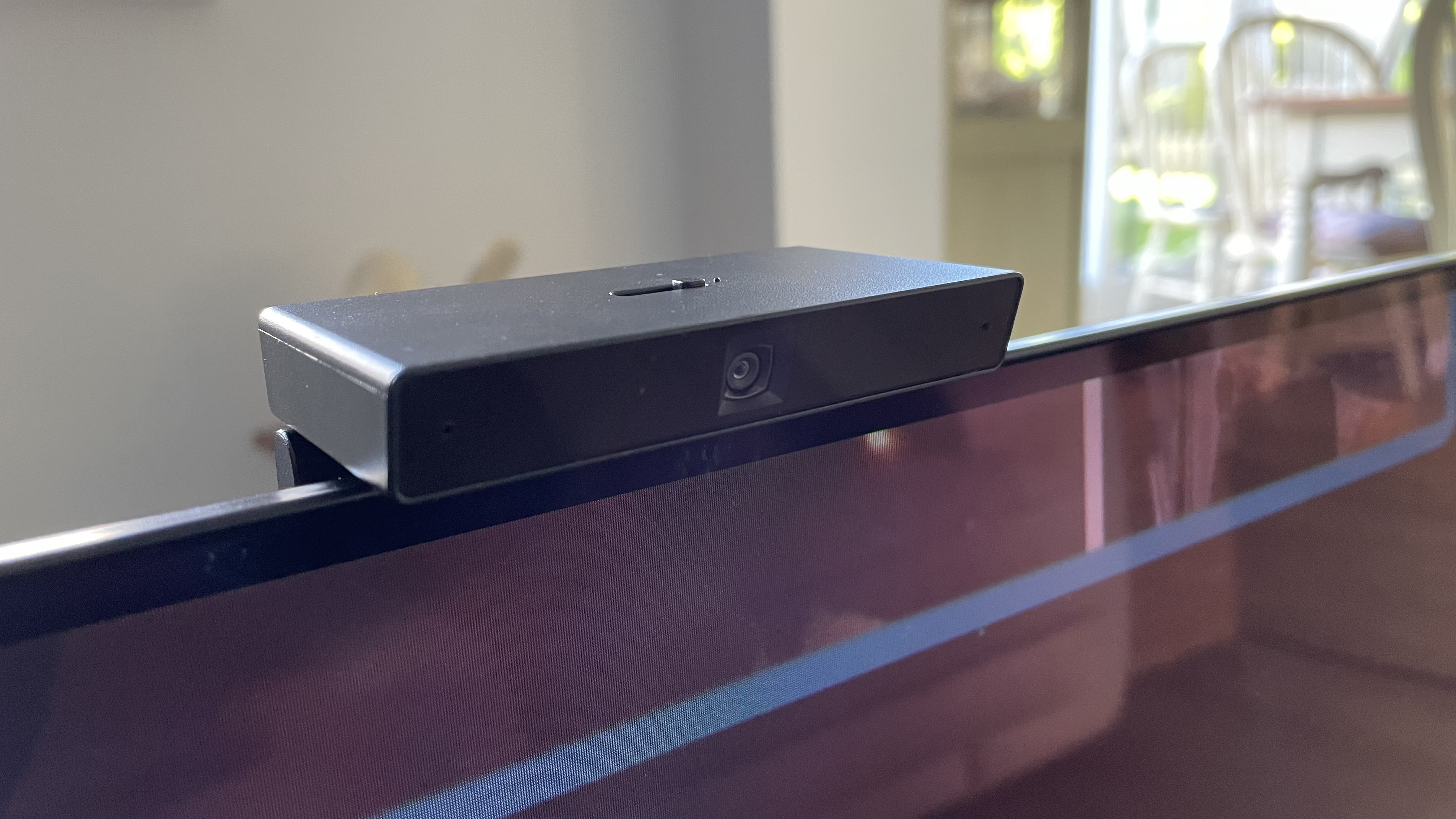
The 55-inch Sony A95K (that's the XR-55A95K for the full code) is available for £2,199 in the UK, $2,399 in the US, and $AUD4,799 in Australia. This puts it at a clear premium over Sony’s other OLED and LCD TVs, as well as most premium regular ‘WOLED’ TVs. Even LG’s super-impressive OLED G2 only costs £1,599 at the time of writing.
This simply reflects Sony’s belief, though, that Quantum Dot OLED technology offers a performance benefit over regular OLED TVs or even Mini LED LCD TVs that consumers should be prepared to pay a premium to own. Where things get more difficult for the A95K on the price front is that Samsung is currently selling its S95B QD OLED TV for just £1,499. The Sony is much pricier for now.
This aggressive pricing may well be part of Samsung’s ongoing battle to try and see off the WOLED threat from its great rival LG Electronics, but facts are facts and numbers are numbers, and if the A95K doesn’t score a significant performance advantage over Samsung’s QD-OLED model, its price hike will look troublesome to say the least.
Sony A95K review: Features & What's New?
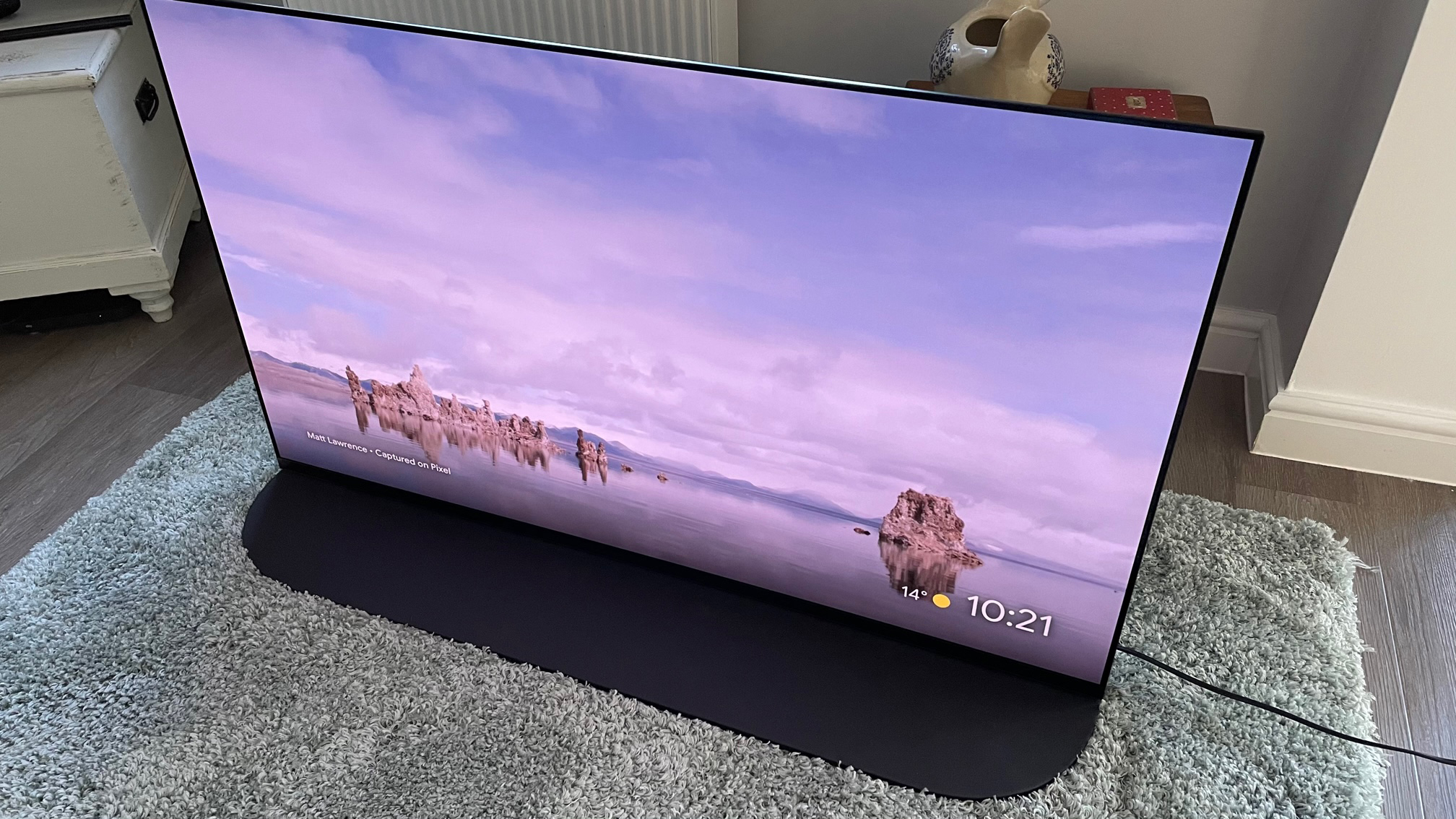
At this point it’s probably high time we actually got to the bottom of what all this talk of Quantum Dot OLED actually means. The way it differs from regular WOLED (also known as WRGB OLED), is that it uses a blue phosphor element to produce each individual pixel’s light, with this blue emission then being passed through green and red Quantum Dot layers of the sort previously only found in the LCD TV world to create a pure RGB picture.
This has two potential benefits. First, it should enable more brightness. Second – and perhaps most importantly – not having to use a white element to boost the image’s brightness like traditional WOLED displays should unlock a wider, richer colour palette. Indeed, Samsung has long cited OLED’s issues with delivering affordably a pure RGB picture as one of its main reasons for leaving OLED technology alone after an early, expensive pure RGB stab at it a decade or so ago.
In Sony’s case, QD-OLED’s potential hardware charms are joined by a specially optimised version of Sony’s Cognitive XR processor, the chief focus of which is to analyse incoming images and then subtly massage, tweak and rebalance countless picture elements in real-time in a bid to create a picture more akin to the way our eyes perceive the real world. So, for instance, the processing will look for the focus of an image, and slightly exaggerate its appearance relative to everything else to replicate the way your eyes tend to focus more on dominant objects in our field of view.
There are also elements of the Cognitive processor, devoted to noise reduction, enhanced upscaling of HD sources, more refined colour reproduction and, of course, Sony’s famously reliable motion processing.
As with regular OLED TVs, the A95K’s Quantum Dot OLED screen supports much wider viewing angles without any picture quality being lost than LCD TVs, and having every pixel able to produce its own light opens the door to levels of local contrast, colour shading and shadow detail that not even Mini LED TVs can match.
As with Sony’s ‘conventional’ OLED TVs, which continue lower down the brand’s range, the A95K eschews conventional speakers in favour of Acoustic Surface Audio+ technology, where the actual screen surface is used to produce sound. The advantages of this are that the sound propagates forward towards you for a punchier, more room-filling effect, so it's possible to place specific spot effects on the screen much more accurately.
As with Sony’s premium WOLED models, moreover, the A95K’s implementation of Acoustic Surface technology is bolstered by a pair of built-in bass drivers on the TV’s rear. The set carries the connectivity to make the A95K the centre channel speaker in a wider surround sound system too, if that suits your setup with one of the best soundbars.
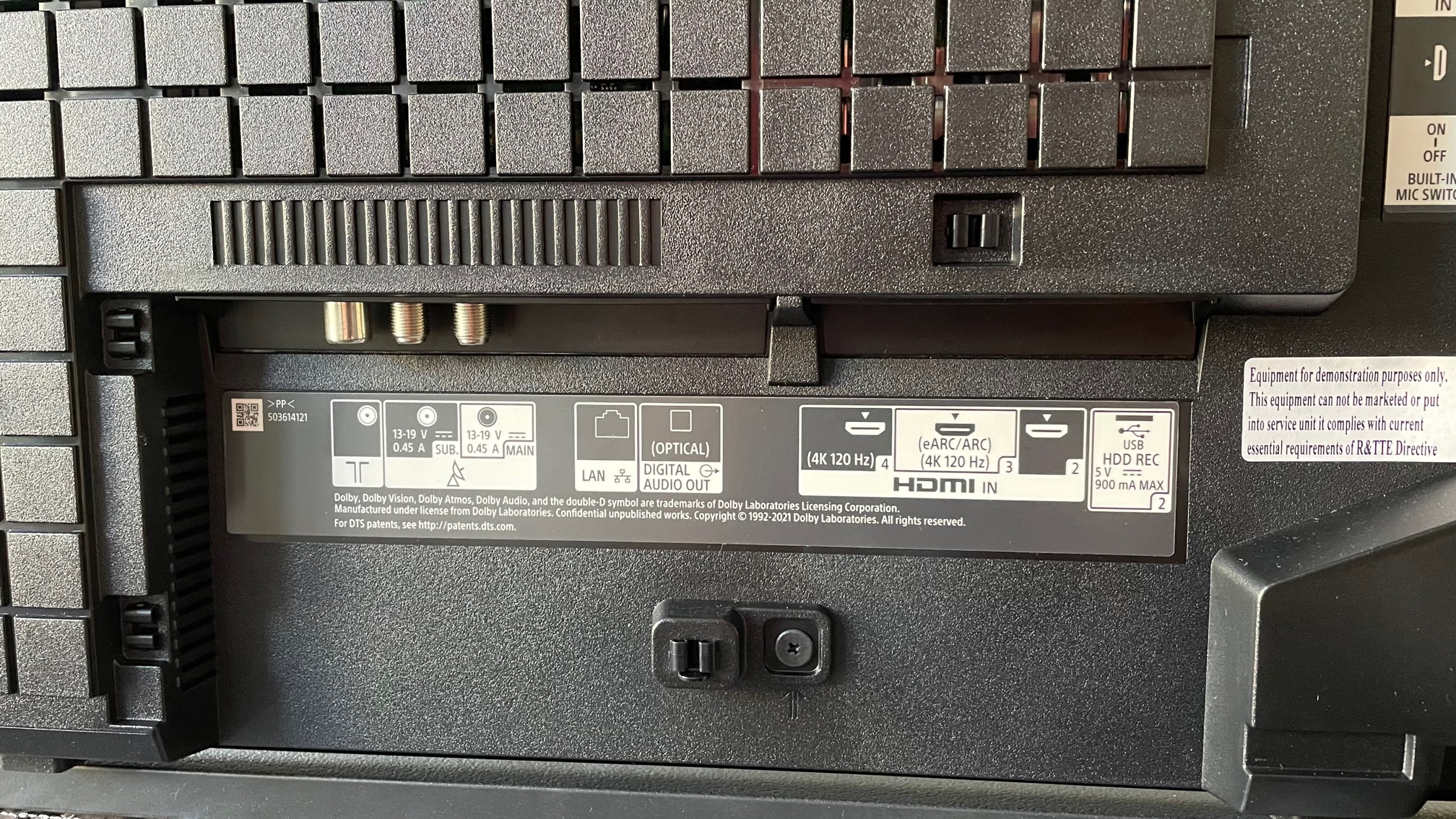
Other connections include four HDMIs and three USBs, with two of the HDMIs capable of handling the latest 4K/120Hz and variable refresh rate (VRR) gaming features.
It’s a pity that all four HDMIs aren’t up to full gaming speed, and unusually – and unhelpfully – the way the HDMIs are configured means you have to choose in a dedicated onscreen menu whether you want to enjoy Dolby Vision high dynamic range (HDR) from the TV, or 4K/120Hz. You can’t have both at the same time.
Gamers will likely be reasonably happy, though, with the A95K’s measured input lag time in its Game mode coming in at a very respectable 16.5ms.
The support for the premium Dolby Vision HDR format is joined by playback of the more basic HDR10 and HLG formats, but like LG, Sony still isn’t buying into the HDR10+ format. So content mastered in that will lose its extra scene-by-scene data and revert to the more basic HDR10 system.
The A95K’s smart features are powered by Google TV. This isn’t our favourite smart platform by any means, but it’s extremely content-rich, and represents a clear step up presentationally from its Android TV predecessor.
It’s worth adding that Sony also provides the YouView app on the A95K to cover Google TV’s blind spot when it comes to some of the UK’s terrestrial broadcaster catch-up apps.
One last notable feature of the A95K is the BraviaCam that ships with the TV. This can be attached via a simple magnetic connection point on the back of the TV’s upper edge, and opens up not just the potential for video calls but also a potentially superior viewing experience since the camera can be used to figure out where you’re sat in relation to the screen and subtly adjust the sound and picture output accordingly.
Sony A95K review: Picture quality

So does the A95K live up to the QD-OLED picture quality hype? The short answer is yes, to the extent that it arguably delivers the best all-round picture quality we’ve seen from a TV to date. Though the longer answer involves a couple of minor qualifications.
Brightness is slightly up over the best regular OLED TVs, peaking at 1020 nits (though this does drop off quite quickly). This is enough to matter – especially when it comes to the sort of small peak brightness areas that contribute so much to an authentic high dynamic range experience. Especially given that the A95K’s intense peaks are able to exist right alongside – as in, just a pixel away – from a shot’s deepest, darkest black colours, without either the bright or dark pixels compromising each other. A gorgeous reminder that the expanded light range of HDR is as much about the dark depths as the bright peaks.
These black levels are as inky on the A95K as we’ve come to expect from regular OLED TVs, despite the slight uptick in brightness. The only exception to this is if Sony’s TV finds itself sat in an extremely bright room – especially if its position sees its screen being struck by direct sunlight or powerful artificial light sources. This can cause dark areas to look quite grey until the light source is removed – something that doesn’t happen with regular OLED TVs thanks to their use of advanced polarising layers.
To be clear, though, the amount of light required to cause this greyness on the A95K is higher than anything you’d find in a typical living room environment –and when you’ve got that much light in your room, you probably won’t notice a drop off in black level performance as much anyway.
While it’s good to see the A95K nerdling a touch more brightness out of a self-emissive screen technology than we’ve seen before, its real secret weapon is its colour performance. Rich tones – especially reds and yellows – enjoy a level of vibrancy, volume and purity beyond anything we’ve seen before on any other self-emissive TV technology. And they achieve this with more control, balance and consistent naturalism than you get with the Samsung S95B QD-OLED, even if the Samsung can sometimes look more flat-out spectacular.
Sony’s more mature (for want of a better word) approach to marshalling the benefits of QD-OLED to an immersive experience is down to a combination of Sony’s Cognitive XR processor, and the brand’s philosophy of trying to make the pictures its OLED TVs resemble as closely as possible the images produced by its own professional mastering monitors.
This processor does an outstanding job of getting all the subtle things right that contribute to turning a good picture into a great one. Areas of colour enjoy beautifully subtle shading that helps them look more three-dimensional and realistic. This helps the screen unlock breathtaking levels of fine detail and texture too, delivering a relatively extreme 4K experience. As usual, moreover, Sony’s processor also does an immaculate job of upconverting HD-resolution sources to the screen’s native 4K resolution, adding plenty of detail and sharpness without the results becoming noisy or gritty.
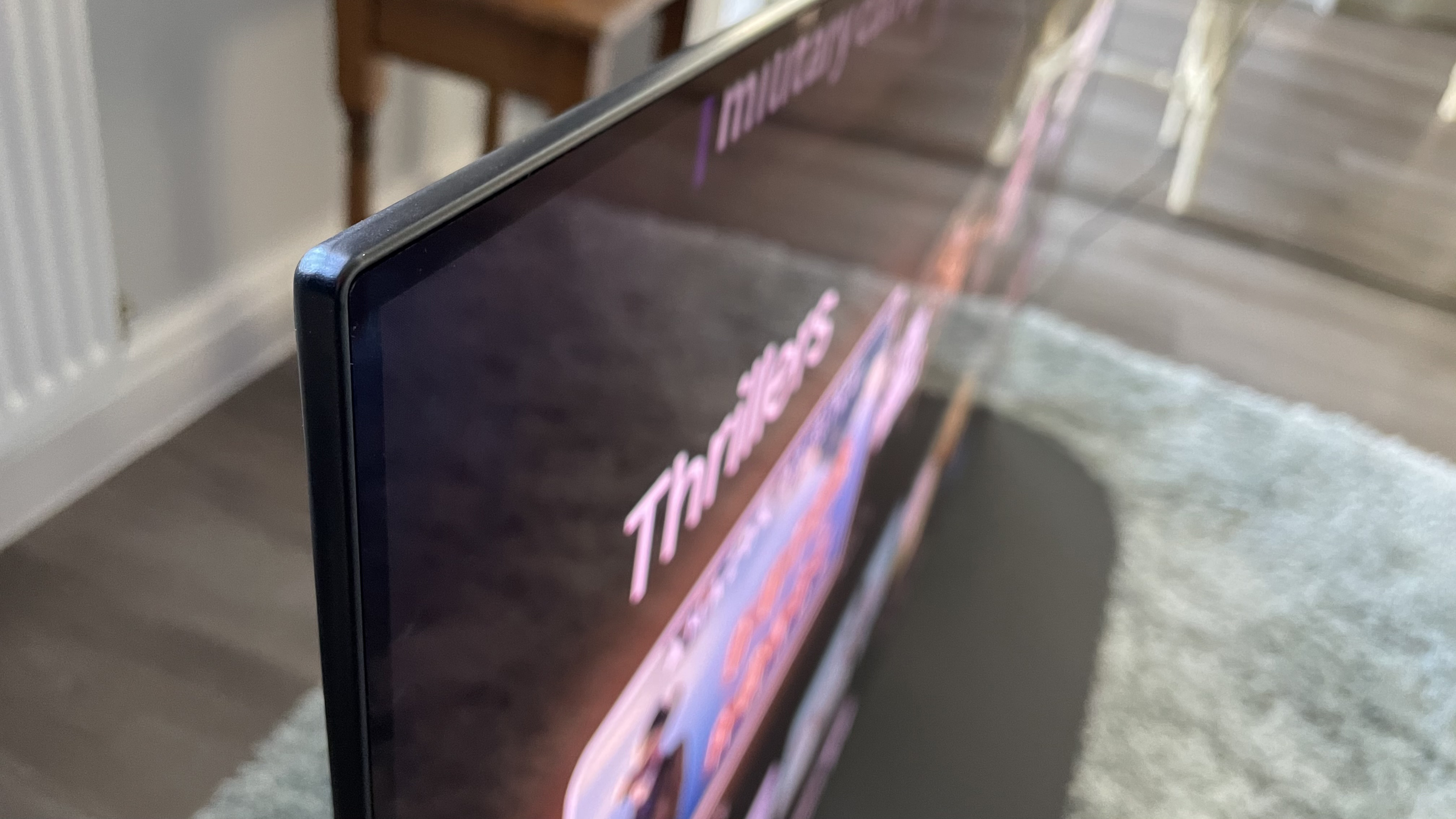
The A95K handles motion judder better than most rivals even without using Sony’s motion processing options, too – though if you do want to reduce what judder there is, you can do so using the True Cinema Motionflow setting without the results looking unnaturally fluid or throwing up too many processing side effects. There’s a touch more motion blur in the picture than you get with Sony’s regular OLED TVs, but it’s usually only slightly noticeable.
The processor also handles light beautifully in the image, creating a dynamic but also immensely subtle range of light no matter what sort of picture you’re watching, and the set suffers precious little detail/tone clipping in bright areas.
In other words, while the extra colour and brightness extremes the A95K can achieve are important in selling the advantages of its new QD-OLED technology, the screen is also seriously accomplished at filling in every subtlety of light and colour between those extremes.
One last strength of the A95K is its viewing angle support, which finds it watchable from pretty much any angle without any loss of colour or contrast.
There are one or two niggles to mention beyond the bright direct light contrast and slight motion blur points noted earlier. One is that you occasionally lose a touch of shadow detail in very dark areas, while the other is that while peak brightness is up over regular OLED screens, it’s only up by an evolutionary degree rather than the revolutionary amount we’d optimistically been hoping for.
In fact, Sony’s image management chooses at times to take so little advantage of QD-OLED’s extra brightness that some regular OLEDs can look actually slightly punchier with some images than the A95K does. Samsung’s S95B QD OLEDs are certainly more aggressive about showing off the technology’s unique charms – but the results are less consistent and disciplined.
In the end, though, while the A95K didn’t quite stop the tech dreamer in us wanting a little bit more of a next-gen feel, it still delivers for us the best all-round picture quality we’ve seen from any TV to date. And really it’s not reasonable to ask for more than that.
Sony A95K review: Sound quality
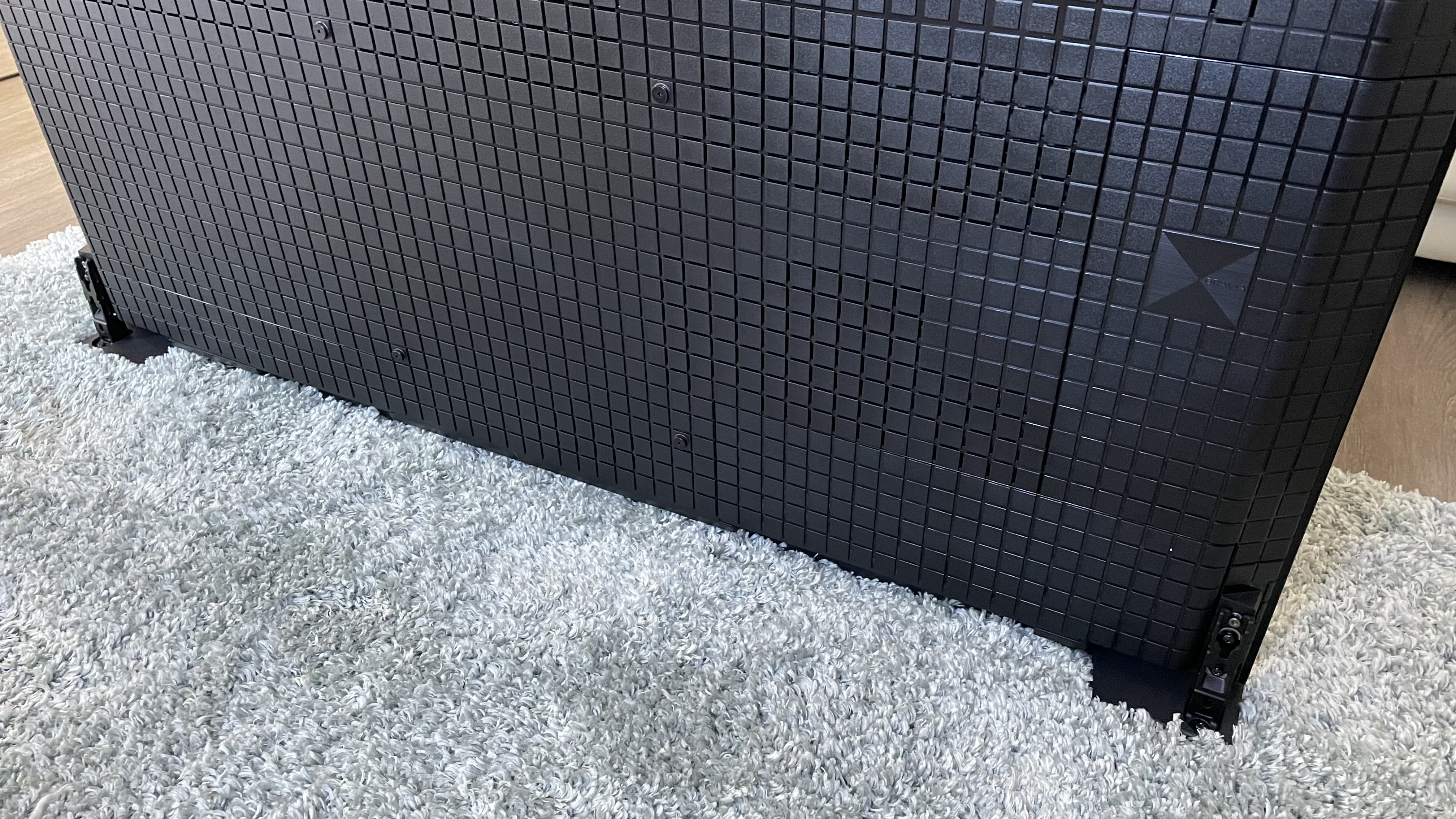
The A95K is another win for Acoustic Surface technology. Particularly impressive is how powerfully the sound made by the screen pushes forwards towards you, filling the room with a well-rounded, richly detailed sound that really involves you in the action, rather than everything sounding like it’s coming from behind the TV.
The tone of the sound is rich and engaging too, with no harshness at the top-end or buzzy, phutty, distorted bass at the other. Instead you get an open, lively, wide-ranging mid-range that never does anything nasty to distract you from what you’re watching.
The twin bass woofers on the A95K’s rear attach their low frequency sounds to the lower-end of the screen’s main sound extremely tidily too, so that bass doesn’t sound baggy or detached. And again, except at volumes well beyond anything most people would consider comfortable, the bass drivers avoid losing their composure or dropping out.
Dialogue is credible with voices, always intelligible and well contextualised. All in all, the A95K’s built-in sound is good enough to be not just a suitable accompaniment to the TV world’s best pictures, but a potentially credible centre speaker in a pretty serious external surround system.
Sony A95K review: Design and usability
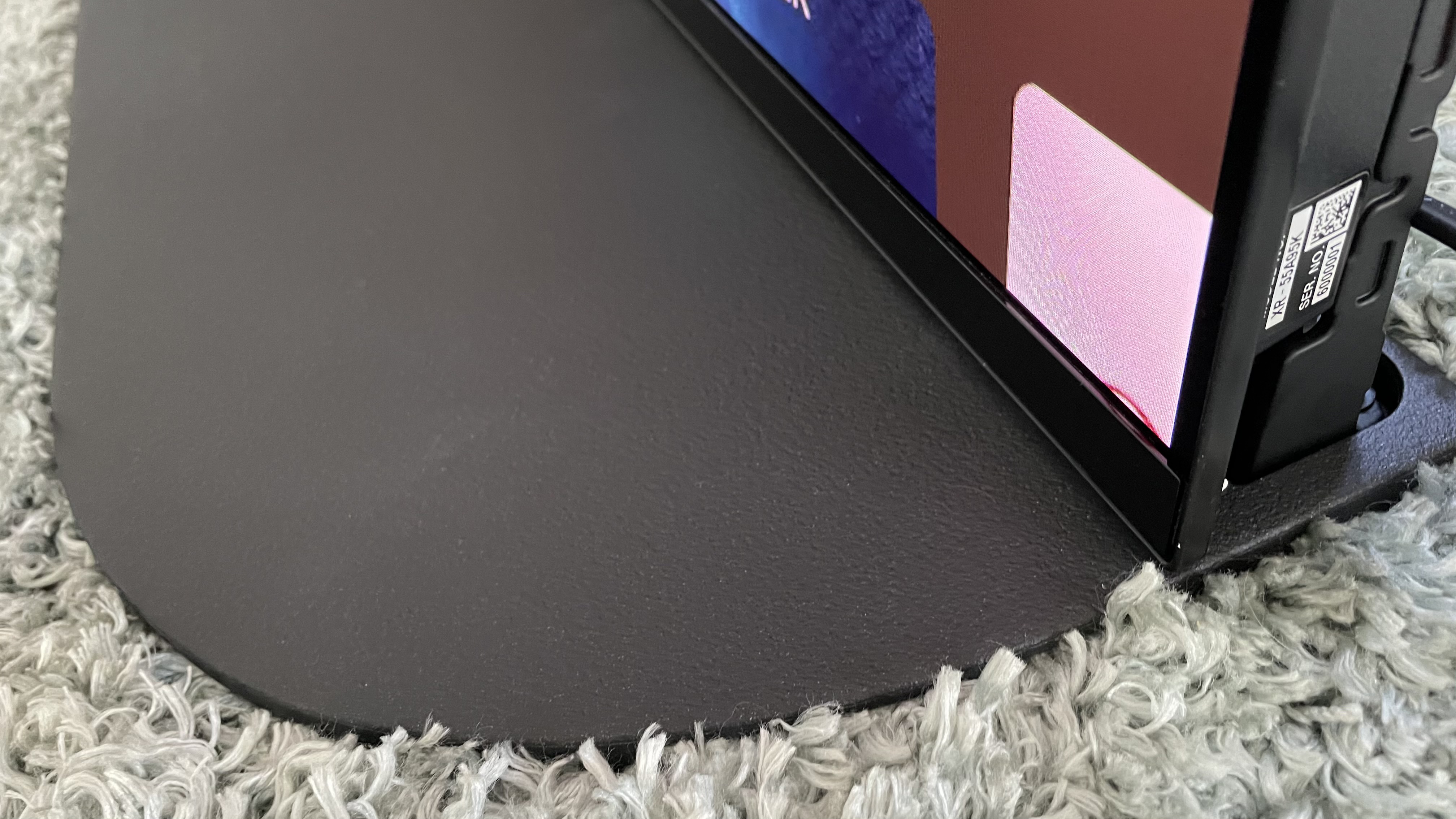
The A95K’s unusual design is, quite deliberately, reminiscent of Sony’s first-ever OLED TVs: the A1E series. This finds the screen sitting right down on a heavy black metal plate-style stand that runs the full width of the screen (making it tricky to place a soundbar underneath it if you’re not satisfied with the TV’s audio system).
You can choose whether you want to attach the screen to the front or back of its stand plate. Personally we suspect most people will prefer the cleaner look you get with the screen attached to the base’s front, but if your living room isn’t very big it could be handy to be able to place the screen at the back of the stand so that it can be pushed right up to your wall.
The A95K’s bodywork is relatively chunky by today’s OLED TV standards – possibly because of its powerful audio system. It wears its bulk stylishly enough, though, thanks to its use of multiple clip-on covers to hide cabling and an unusual checkerboard pattern etched into its rear plastic. Not that anyone looks at a TV’s butt for very long anyway, mind you.

Sony’s reliance on Google TV for its smart systems doesn’t make the A95K particularly easy to use. While Google TV is more attractive and a bit more customisable than its Android TV predecessor, its full-screen interface and sometimes dictatorial-feeling approach to content curation can make getting to the stuff you actually want to watch a bit of a chore. The way the smart interface ties in with the picture and sound set-up menus can be confusing too.
Google TV does deliver a huge amount of content, though, and where it falls down – namely with the catch-up apps of one or two of the UK’s main terrestrial broadcasters – Sony picks up the slack by adding the YouView app that brings together the UK’s main catch-up services under a single umbrella interface.
Sony A95K review: Verdict
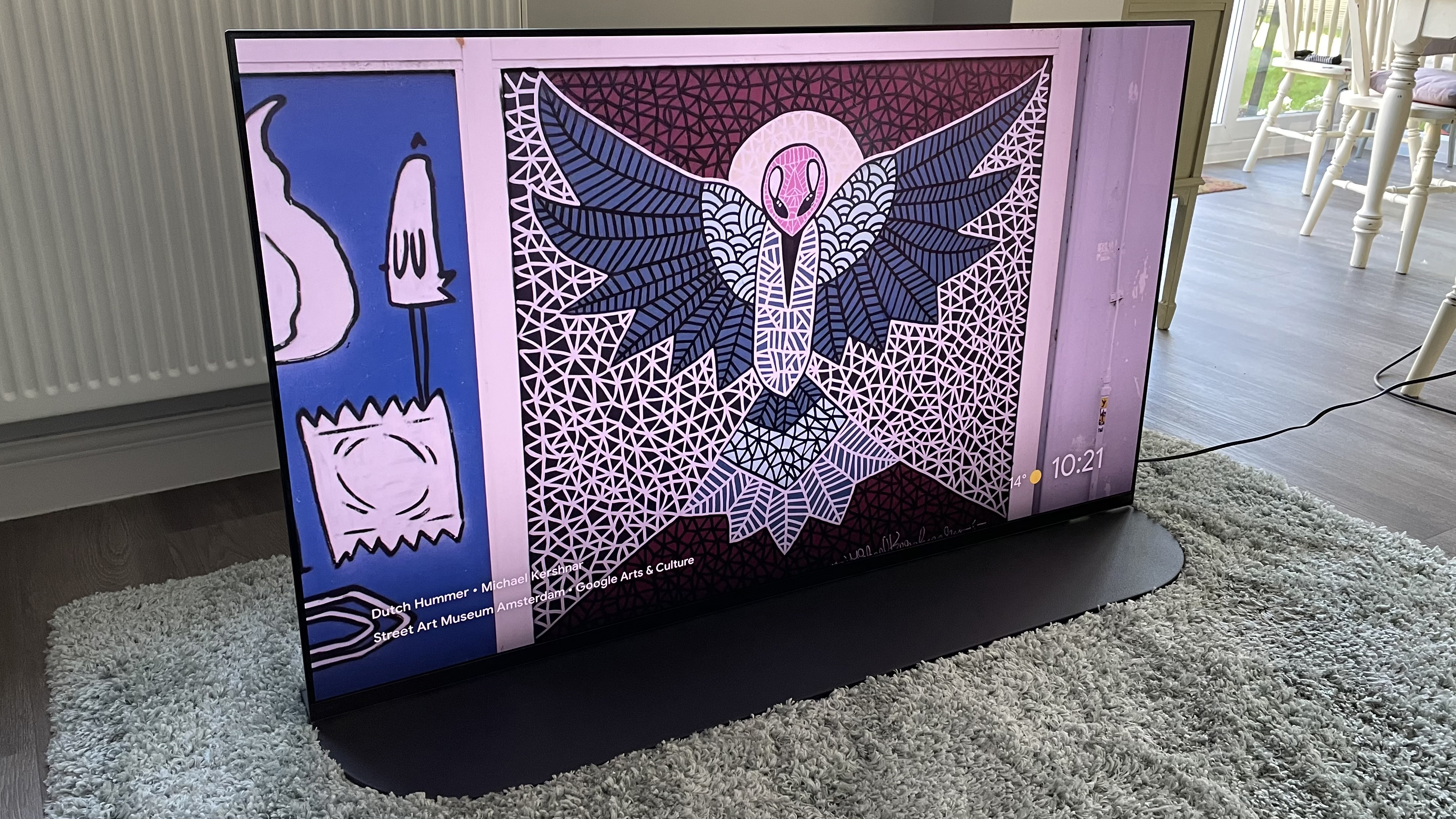
Sony’s 2022 flagship TV isn’t perfect, but it's very close. Let's get the minor niggles out the way first: it can lose black level in very bright rooms; it’s only available in 55-and 65-inch versions, with no 77-inch model for home cinema fans; it sells for a hefty premium over Samsung’s rival QD-OLED S95 model; and we guess it feels more like a step up from regular OLED TVs rather than a quantum leap.
But there's so much good to be gleaned from the A95K: even a small advance over regular OLED is a massive deal, given how beloved the best regular OLED TVs are among AV fans. Couple this with Sony’s take on QD-OLED offering a more controlled and ‘creator’s intent’ approach than Samsung and add in Sony’s much superior audio system, and the A95K is pretty much by default the best all-round TV we’ve ever seen.
Also consider
Samsung's S95B is the closest direct rival to Sony’s A95K, in that it also uses new Quantum Dot OLED technology. It pushes the technology’s brightness and colour advantages harder than the Sony does, but while this can deliver more eye-catching results, its images are also more prone to inconsistency and moments of not looking very natural. The S95B’s audio is nowhere near as good as that of the 55A95K either.
Samsung’s QN95B uses Mini LED technology to deliver a brighter HDR experience than the Sony A95K offers, and its impressive local dimming system delivers class leading black levels by LCD TV standards. There’s not the level of local contrast you get with QD OLED, though.
If you want something a bit cheaper, the most impressive rivals (because of how bright they get by regular OLED standards) are LG’s G2 and Philips’ OLED+907.
Sign up to the T3 newsletter for smarter living straight to your inbox
Get all the latest news, reviews, deals and buying guides on gorgeous tech, home and active products from the T3 experts
John Archer has been testing TVs and AV gear for over 25 years, having worked on Home Cinema Choice magazine. He's a contributor to Forbes, TechRadar, Trusted Reviews, Wired and many more places – if you've owned a TV in the last couple of decades, John's probably reviewed it somewhere. He's seen so many hot new technologies come and go, like tears in the rain.
-
 You might not know about it, but this Prime Video sequel is going to be enormous
You might not know about it, but this Prime Video sequel is going to be enormousCulpa Nuestra will be massive
By Max Freeman-Mills Published
-
 Puma’s radical new carbon racer claims to knock 4 minutes off your marathon PB
Puma’s radical new carbon racer claims to knock 4 minutes off your marathon PBThe Fast-R NITRO Elite 3 is the brand's lightest-ever super shoe, backed by SCIENCE
By Matt Kollat Published
-
 Is this compact UV printer the best tool for creative makers in 2025?
Is this compact UV printer the best tool for creative makers in 2025?Meet the gadget helping Etsy sellers go pro at home
By Matt Kollat Published